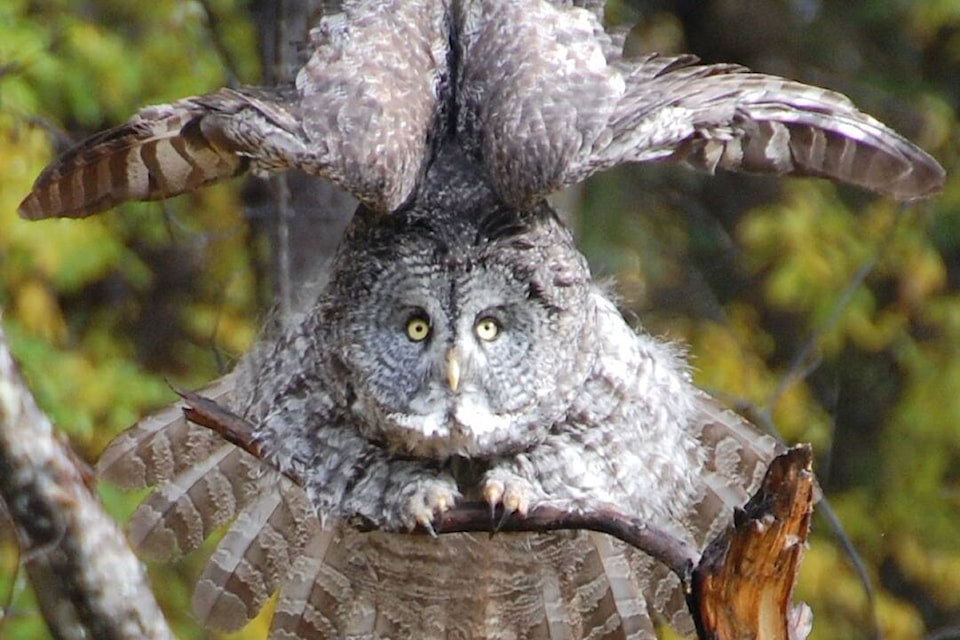Great Gray Owls are superbly adapted for hunting throughout the year. They have beautiful big eyes, so their sight is good day or night, but good eyesight is not much use if voles (their favourite food) are buried underneath a blanket of snow.
Owls have big talons to catch their prey and large, strong, pointed beaks to tear the voles apart once caught. Great Grays are known to precisely plunge their talons up to 45 cm into the snow, even if it is heavily crusted snow that could bear the weight of an 80 kg human.
The most important features Great Grays possess to catch voles successfully from under snow are their ability to hear even the softest sounds and to be able to fly ‘silently’. Great Grays have the largest facial disc of all owls, which functions to focus low-frequency sound onto the ears hidden in the feathers. The ear on one side of the head being positioned higher than the other aids in more accurate positioning of the prey.
All owls can fly without making much noise. In most birds other than the owls, the movement of air over the leading edge of the wings is turbulent, noisy, and easily heard. Perhaps you have heard the loud whup whup made by the wings of ravens as they fly close overhead.
Owl flight is very quiet due to the presence of a comb of fine, hair-like feathers on the wing’s leading edge and a fringe on the hind edge, both breaking up the air turbulence. In addition, the Great Gray’s wing feathers are covered in a velvety coat that decreases the friction on the wings. Together these features mean those cute little voles cannot hear the owls coming, especially from under the snow.
There is one problem for the Great Gray though. It appears that sound does not go in a straight line as it travels through the snow. Recently, owl researchers Clark, Duncan, and Doherty, using acoustic cameras buried in the snow in northern Manitoba, found that a vole’s location can be off by as much as 5 degrees from where the owl pinpointed it to be. This is due to attenuation (muffling by the snow) and refraction or bending of the sound as it moves through the snow (dubbed the “acoustic mirage”).
To successfully catch a vole, the Great Gray pinpoints where it hears the vole, then flies directly toward that point. As the owl gets closer it adjusts its flight so that it stalls and hovers right above the vole. Hovering increases air turbulence over the wings but the velvety feathers help dampen the sound.
The researchers think that the owls must be able to suppress the sound of their own wings so that they can still hear the vole under the snow. When the owl is directly above the vole it pounces, talons first, and comes up with its prize.
Reference: Christopher Clark, James Duncan, and Robert Dougherty, 2022. Proceedings of the Royal Society B.
